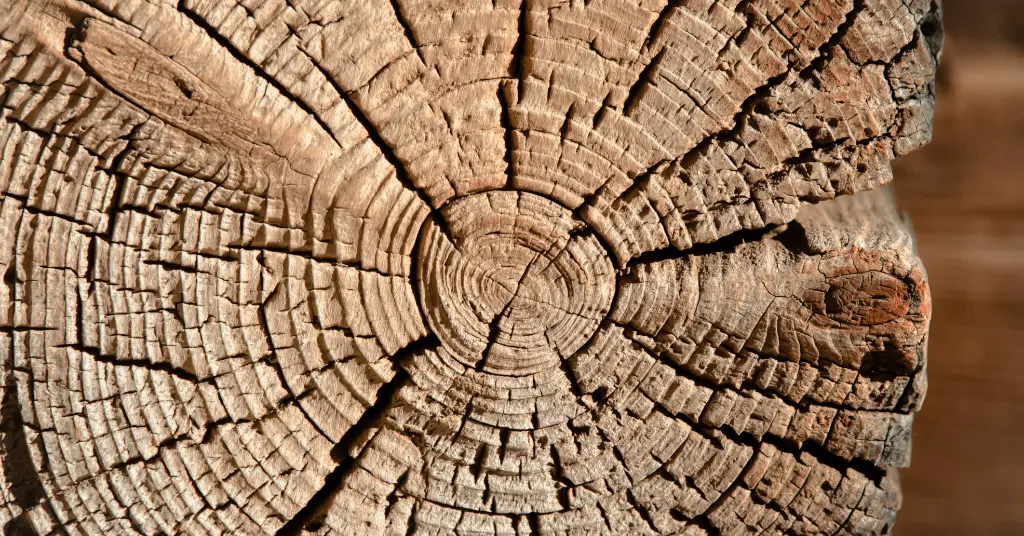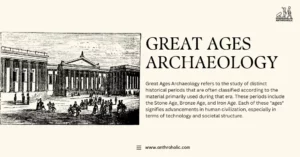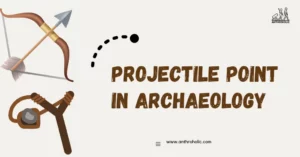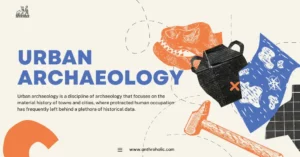AI Answer Evaluation Platform Live Now. Try Free Answer Evaluation Now
Dendrochronology
Dendrochronology is the method of scientifically dating past events and reconstructing environments using tree rings. Relying on morphology of tree rings, dendrochronology traces their contemporaneous time periods as well as surrounding environments. This provides an exact calendar year for the formation of the tree rings and the qualitative and quantitative reconstructions of paleo-environments.

History and Origin of Dendrochronology
Growth layers in trees have been a well-known factor since ancient times. Its usage in dendrochronological reconstruction mostly originated in paleoclimatic inspections, first by Duhamel and Buffon in 1737 and then by Charles Babbage in 1838.[1]
The method was first practically employed by Andrew Elicott Douglas, an astronomer whose groundbreaking study of local pine tree-rings led him to discover that the external climatic control of a wider area can be inferred by examining the width variability of tree rings belonging to different trees in that area.[2] Douglas then published a 500-year chronology of the trees in that area and could successfully correlate tree ring data with the precipitation rates of preceding winters.
The practice of dendrochronology instantly caught the attention of archaeologists who could implement the technique in archaeological applications pertaining to chronology, environment and behaviour.[3]
Principles
Tree-rings
The foremost principle of dendrochronology requires highlighting the nature of tree rings themselves. These concentric rings are visible upon a cross-section of the bark of a tree. They surround its pith (bark) and radiate towards the circumference (edge). These rings denote a temporal order which is unalterable and represent one ring per year as an incrementally occurring timescale. Additionally the radial growth of the rings is dependent on external factors (mostly climate), which helps in conducting tree ring analysis for dating.
Crossdating
The correlation of patterns of ring variation among trees is called crossdating. In dendrochronology it is not counting of rings, but such comparisons which produce accurate absolute dates. In essence, the nature of the density and width of tree-rings among trees within a common spatial context can address their external climate factors from particular time periods.[3]
Aitken gives three paramount uses of crossdating in dendrochronology –
- Assignment of exact dates to tree ring sequences when only one tree-ring date is known.
- To obtain the age of an undated ring series by corroborating information from unique places where other series are dated.
- To detect absence of rings as well as ‘false rings’ in cases of adverse external conditions.[4]
Chronology Building
The next principle of dendrochronology is dependent on ‘crossdating’. Chronology building uses data from individual ring sequences and builds long absolutely dated ring sequences. These are fundamental in obtaining average or common variability of many trees which serves as a standard composite dataset for further dating.[3]
Techniques of Dendrochronology
The analysis of rings, building of chronologies and crossdating all require a systematic process and set of methods. They are as follows –
- Selection of data categories including ring density, ring width, frost signs and fire scars serves as a basis for tree-ring analysis.[5]
- Data capture for measuring ring-widths for keeping record of their variability. New techniques include X-ray and densitometric technology. Data is stored in computer hard disks.
- Data standardisation as a means of achieving standard or average ring variability. This reduces sample difference to allow much better results.
As previously discussed, techniques also include crossdating and chronology building as data comparison and data consolidation respectively.
Applications of Dendrochronology
Application of dendrochronology belongs to a few branches including geology, environmental sciences and archaeology. To some extent its implementation in archaeology is associated with its place in other scientific studies. The dating method gives information about climate variability and shifts in atmospheric circulation.[6] This helps place archaeological material in the time-specific contexts of their origin. Dendrochronology also allows relative dating of geological depositions along with recalibration of inaccurate radiometric data.[7]
Environment Reconstruction
Past environment variability can be obtained using ring-width and ring density data. This helps understand the type of climate[8](paleoecology) that a specific site witnessed in a particular time period. These are called dendroclimatic reconstructions and they help understand events and phenomena in the past like the nature of wildfires, levels of precipitation, spatial distribution of plant species, streamflow of rivers, enrichment of carbon dioxide in the atmosphere etc. Scholars regard this as valuable information to test against hypotheses about human adaptive strategies and survival in the coinciding time periods.
Additionally tree-growth effects of ashfall in wood from nearby sites have been used to date volcanic eruptions in the past. Examples include the eruption of Sunset Crater in northern Arizona, dated to 1064 AD.
Past-Human Behaviour
Dendrochronology has helped elucidate patterns of past human behaviour including procurement of wood for making settlement structures, weapons and tools. For example, Niels Bonde (1994) has done so by crossdating a tree ring series of archaeological material (timber) with master chronologies found in Hanseatic cities of northern Europe and subsequently tracing it to the eastern Baltic region as well as Belgium.This can indicate importing activities between the regions.[9]
In other cases, researchers have examined bark removal activities for past usage that can leave scars on tree-ring radiation. These scars possess the time, purpose and seasonal context of that activity. [10]
Limitations of Dendrochronology
- Dendrochronology is not possible without the presence of trees in associated site locations. Not every site has a rich floral landscape.
- According to Aitken, the development of tree-ring data largely depends on permitting conditions. Hence, such data is difficult in extreme arid conditions.[11]
- The tree-rings can only provide dates within the life cycle of the trees and not the time when they were felled or specific date when they were used. This confines the process and scope of dendrochronology to a few thousand years (only bristlecone pine trees originate to 9,000 years).[12]
- Tree-ring data from wooden structures, tools and artifacts cannot indicate whether the material was reused by prehistoric people. This hampers correlational potential.
Conclusion
The practice of dendrochronology is firmly grounded in combining absolute dating (tree rings) with relative dating (contextual remains). Today, every major university in the USA has a tree-ring research centre dedicated to dendrochronology. In some sense, dendrochronology has become a routine practice with refined techniques of densitometry and radiography. The applications of dendrochronology in archaeology far exceed age determination and also include identification of dendroclimatic factors and study of past human activities like procurement of raw material. Lastly, dendrochronology, like other techniques, is not exempt from limitations but still survives the test of time as a highly dependable means of painting a picture of humankind’s past.
See Also
References
[1] Heizer, R.E 1956 The first dendrochronologist. American Antiquity 22: 186-188.
[2] Douglass, A.E. 1914 A method of estimating rainfall by the growth of trees. In Huntington, E., ed.,The climatic factor as illustrated in arid America. Carnegie Institution of Washington Publication 192. Lancaster, Pennsylvania, Carnegie Institution of Washington: 10 1-121.
[3] Aitken, M. J., & Taylor, R.E. (Eds.). (2013). Chronometric Dating in Archaeology. Springer US.
[4] Glock, WS., Studhalter, RA. and Agerter, S.R. 1960 Classification and multiplicity of growth layers in the branches of trees at the extreme lower forest border. Smithsonian Miscellaneous Collections 140 (1). Washington, D.C., Smithsonian Institution.
[5] Polge, H. 1963 [analyse densitometrique de cliches radiographiques. Annales de l’Ecole Nationale des Eaux et Forets et la Station Recherches et Experiences 20: 531-581.
[6] Gebrekirstos, Aster; Bräuning, Achim; Sass-Klassen, Ute; Mbow, Cheikh (2014). Opportunities and applications of dendrochronology in Africa. Current Opinion in Environmental Sustainability, 6(), 48–53. doi:10.1016/j.cosust.2013.10.011
[7] Taylor, R.E. 1987 Radiocarbon Dating: An Archaeological Perspective. Orlando, Florida, Academic Press.
[8] Fritts, H.C, Vaganov, E.A., Sviderskaya, LV, and Shashkin, A.v’ 1991 Climatic variation and tree-ring structure in conifers: empirical and mechanistic models of tree-ring width, number of cells, cell size, cell·wall thickness and wood density. Climate Research 1: 97-116.
[9] Bonde, N., Tyers, I. and Wazny, 1. 1994 From where does the timber originate? Dendrochronological evidence of timber trade in northern Europe, 14th to 17th century. Poster presented at the International Conference on Tree Rings, Environment, and Humanity: Relationships and Processes, Tucson, Arizona, 17-21 May 1994.
[10] Nichols. R.E and Smith. D.G. 1965 Evidence of prehistoric cultivation of Douglas-fir trees at Mesa Verde. In Osborne. D .. assembler. Contributions of the Wetherill Mesa Archeological Project. Memoirs of the Society for American Archaeology 19: 57-64.
[11] [9] Dean, Jeffrey S. 1997. Dendrochronology, in Chronometric Dating in Archaeology – Advances in Archaeological and Museum Science, edited by R.E. Taylor and M.J. Aitken, pp 31-64. Birkhäuser, Boston.
[12] https://stsmith.faculty.anth.ucsb.edu/classes/anth3/courseware/Chronology/07_Dendrochronology.html




